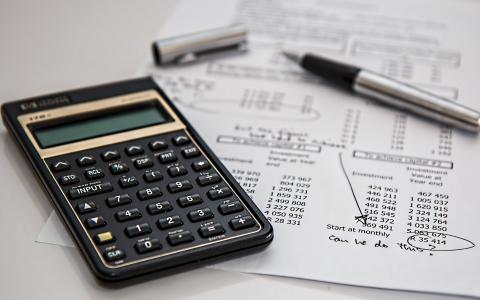
(TheStreet) - How many times have you read or heard that the S&P 500 returns 10% per year? It's an easy number to toss around. However, if that number was wrong, then it could have dire consequences for your retirement planning.
Unfortunately, the S&P 500 doesn't return anywhere close to 10% per year. The actual average return -- after adjusting for inflation, reinvesting dividends, and assuming you pay no taxes-- is almost half that.
How is the oft-quoted figure promising 10% average annual returns so far off? It all comes down to the fact there are multiple averages, but only one truly matters for your investing returns.
The Average Annual Return of the S&P 500, Explained
Let's assume you started investing on the first day of 1990 to provide a sufficiently large dataset. The S&P 500 closed at 353 in 1989, but climbed through the decades to rest at 3,693 on Sept. 23, 2022. That's a pretty big leap!
If you calculate the average annual return through that period, then you arrive at 11.1% per year. This is the number you read most often.
It's also meaningless.
The 11.1% annual return is calculated using the simple average, or the arithmetic average. It adds all the annual returns and losses, then divides by the total number of years in the dataset. That's not how your money compounds.
To illustrate, let's assume you've been an investor for two years. In the first year you earn a 100% return. In the second year you lose 50%. The simple average tells us that your average investing returns are 25% in your two-year career. However, you actually have the same amount of money you started with, meaning you have a 0% return.
That's because your money compounds using the geometric average, which is more commonly referred to as the compound annual growth rate (CAGR).
Let's revisit the example above. If you started investing on the first day of 1990, then you'd have:
- A simple average return of 11.1%
- A CAGR of 8.1%
- A CAGR of 4.6% adjusted for inflation
- A CAGR of 5.3% adjusted for inflation and assuming you reinvested all dividends
- All averages assume you didn't pay any taxes on your returns
That's a little mind boggling, right? That's essentially half the 10% annual return figure that gets thrown around so lazily. There are consequences to oversimplifying.
If you assume you'll earn a 10% annual return for 40 years, then your starting investment would grow by 4,426%. If you assume you'll earn a 5.3% annual return for 40 years, then your starting investment would grow by 689%. That represents a sizable difference for your retirement planning.
Are There Lessons in the Data?
The starting year impacts the long-term CAGR. Generally speaking, you'll earn lower returns over the long haul for money invested at market peaks and during multi-year downturns.
Consider S&P 500 returns through Sept. 23, 2022 when adjusting for inflation, assuming you reinvested all dividends, and paid no taxes:
- A CAGR of 2.7% from the first day of 1999, which was the end of the Dot Com Bubble
- A CAGR of 2.2% from the first day of 2000, which was the first year of the correction after the Dot Com Bubble
- A CAGR of 2.8% from the first day of 2001
- A CAGR of 3.6% from the first day of 2002
- A CAGR of 5.0% from the first day of 2003
For historical context, the S&P 500 rose by double-digit percentages for five consecutive years starting in 1995, but then declined by double-digit percentages for three consecutive years starting in 2000. It was a brutal stretch.
The power of hindsight shows sitting on the sidelines and jumping back in during 2003 would've led to superior long-term returns two decades later. Considering we may be entering a similar period where the markets are correcting from the excesses of 2020 and 2021, the best approach for preserving capital may be to sit on the sidelines. That's surprising even to me!
The challenge with that approach is knowing when to jump back in. For most individual investors, it's impractical to make sudden changes in their exposure to stocks. The next-best strategy is to make steady contributions to your portfolio over a long period of time, which will ensure you're buying stocks in good times and bad. Then again, the numbers above simply use the first day of calendar years – there's no timing involved. Perhaps individual investors would be better off coming back in full on the first day of 2024 or 2025.
By Maxx Chatsko
September 26, 2022



